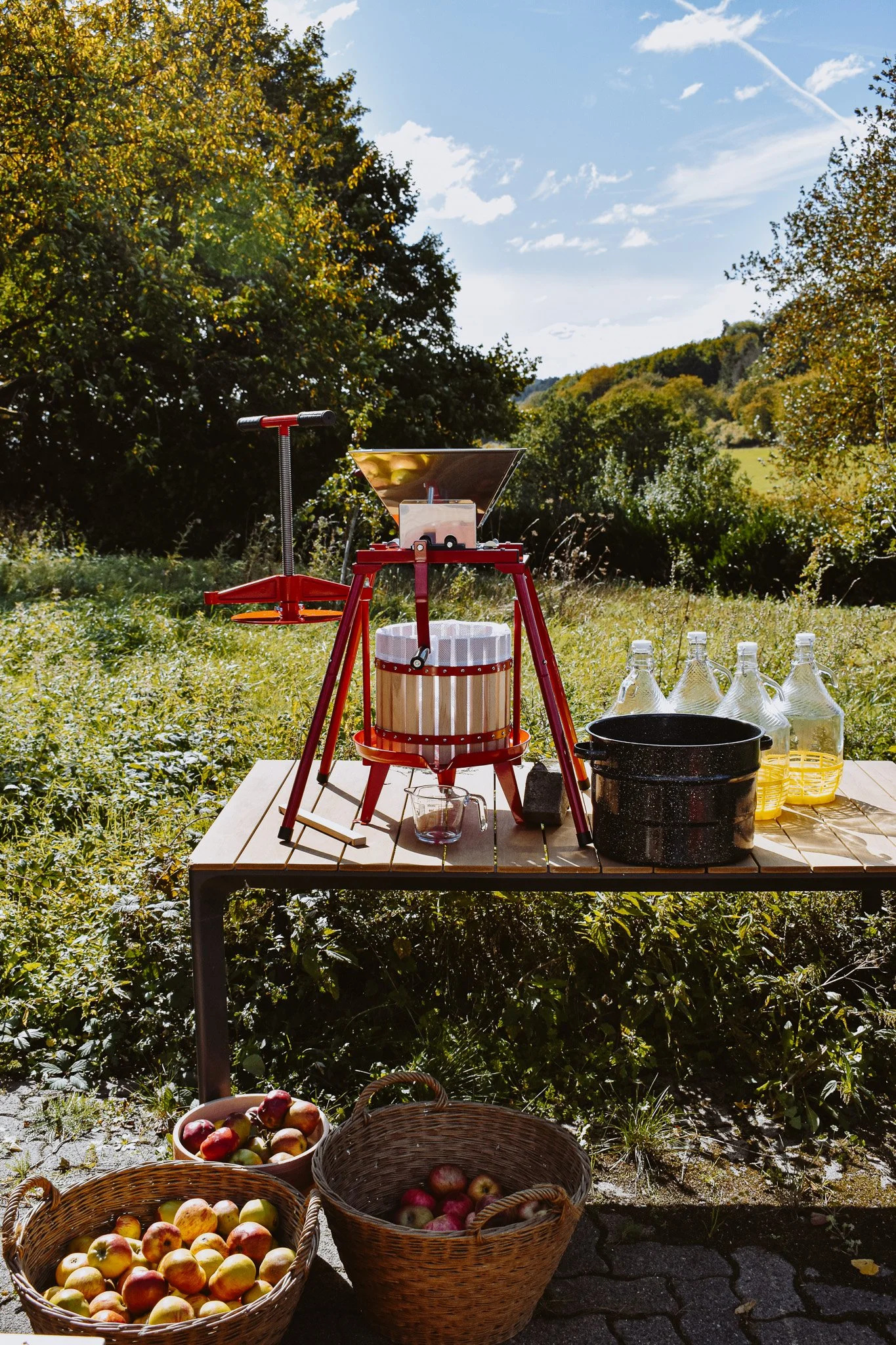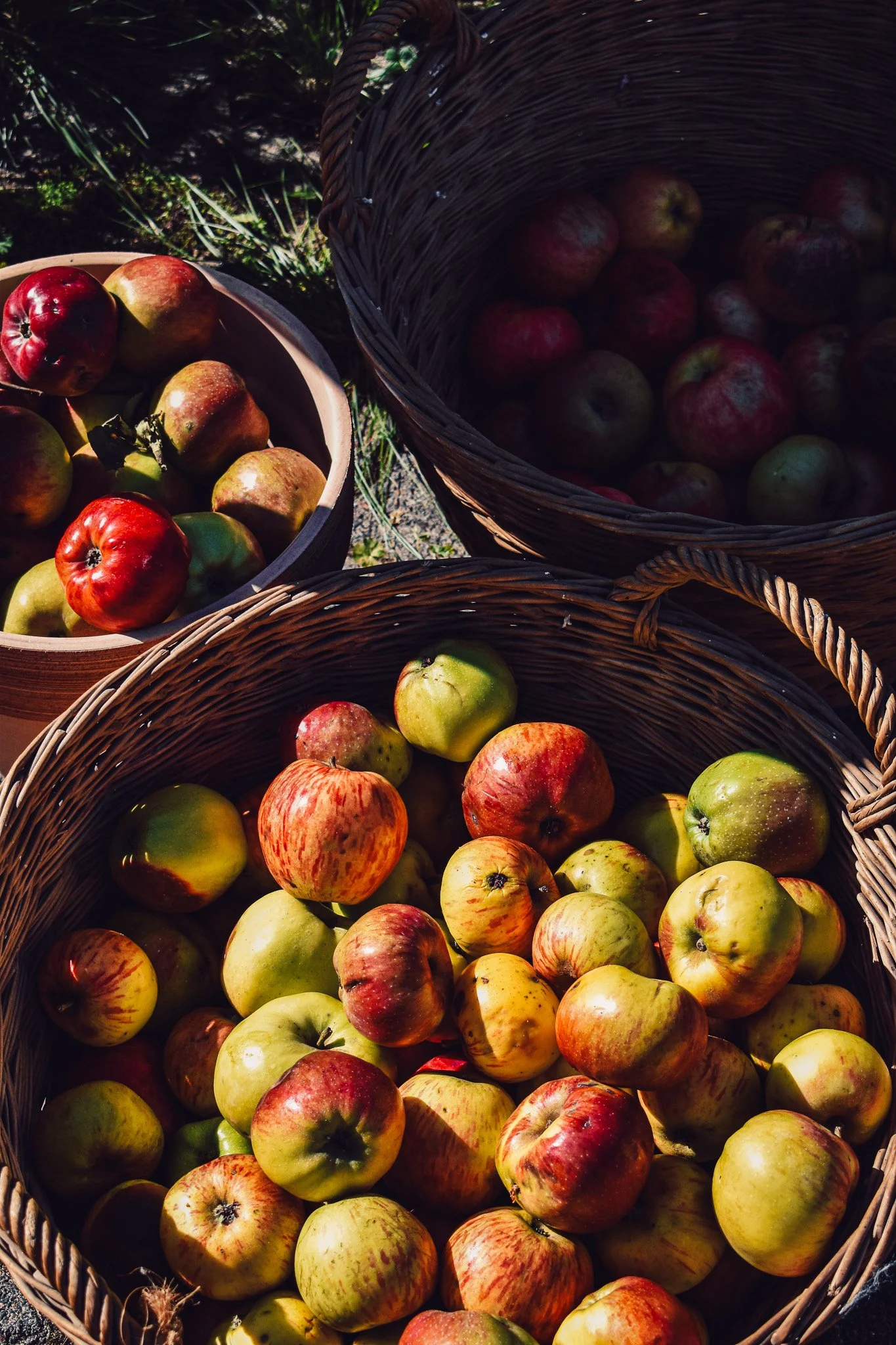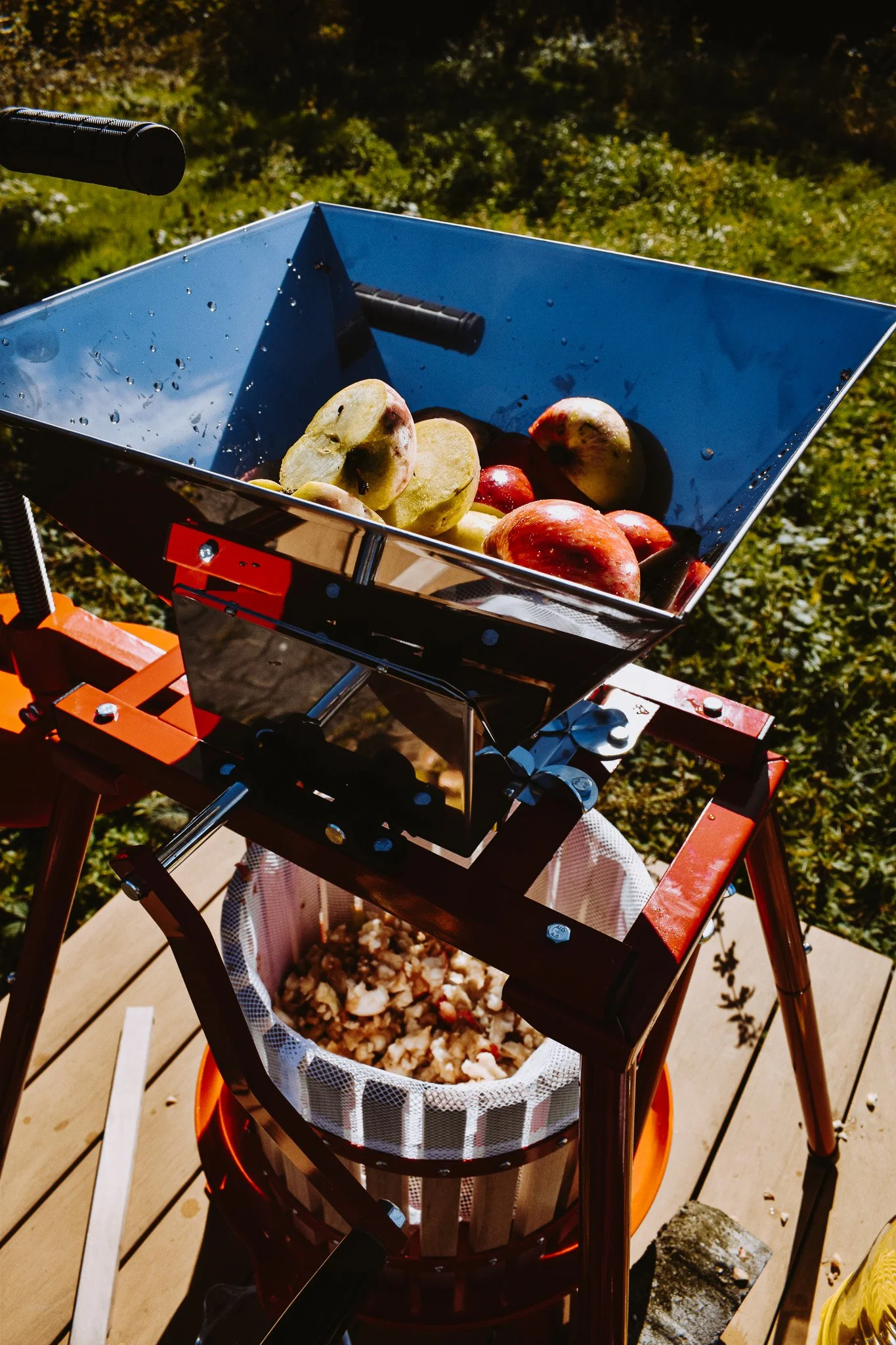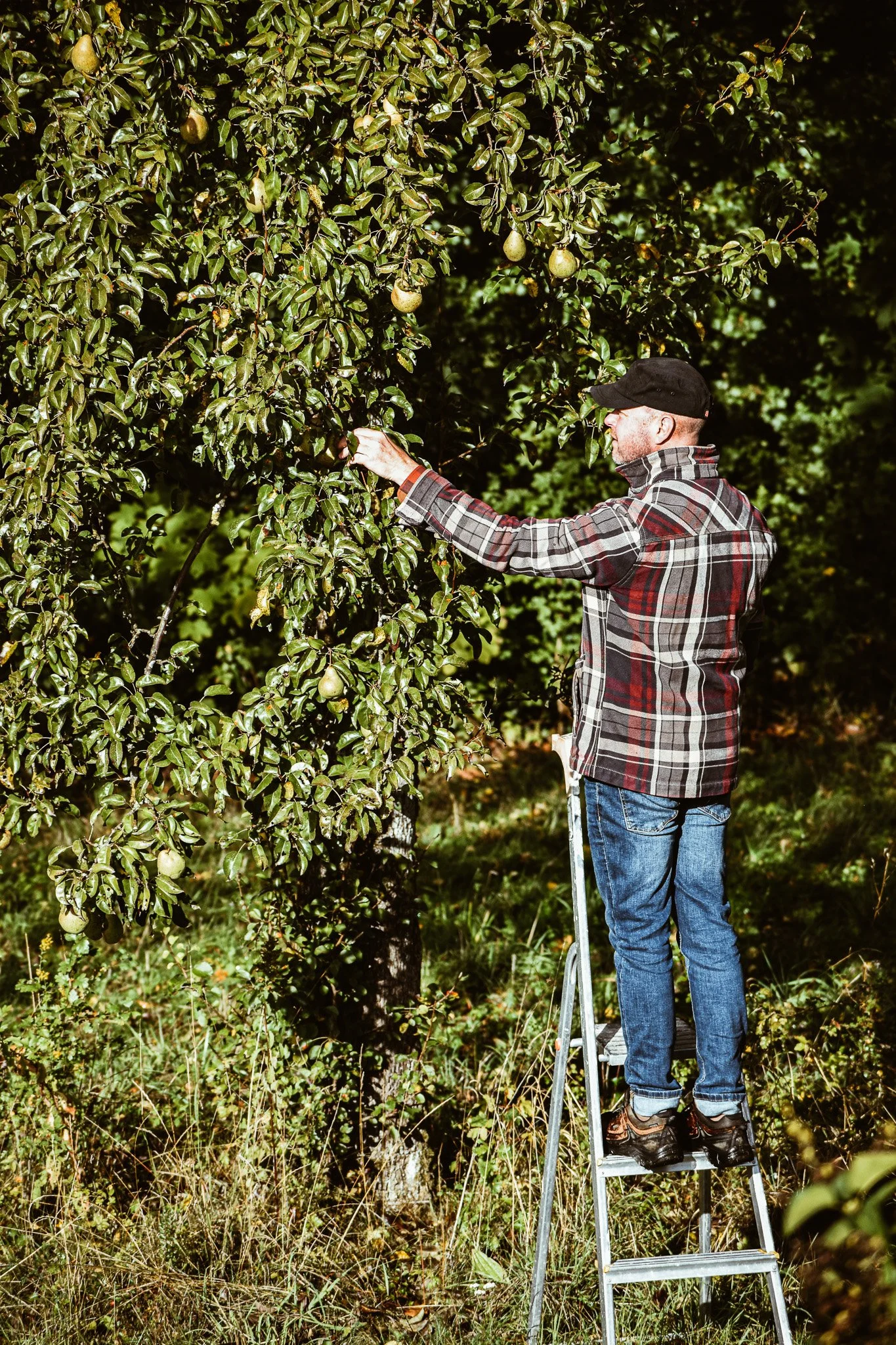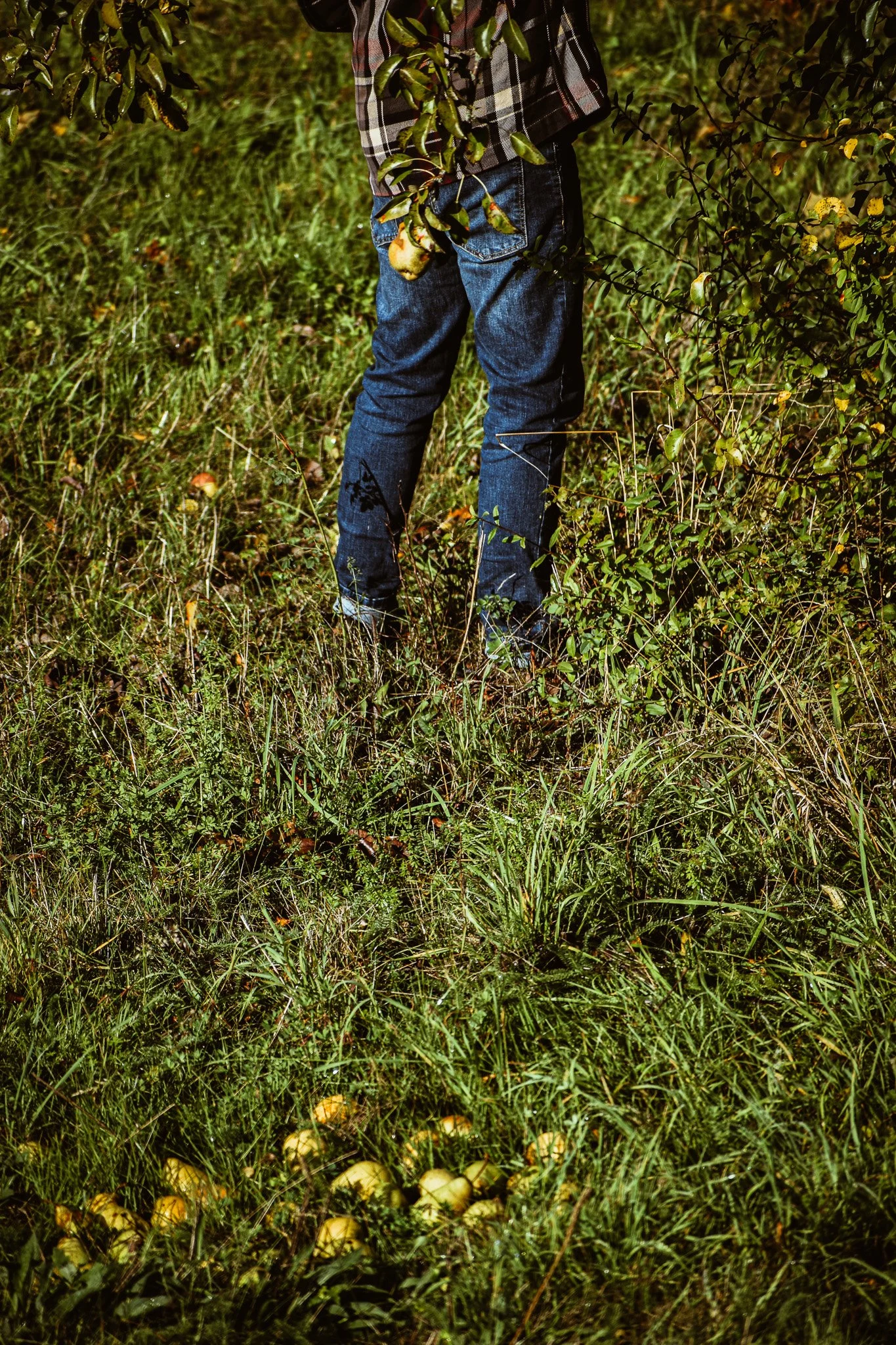Homemade Hard Cider & Apfelwein Recipe
One year Down
When we moved to Winnen last October, I had no idea how quickly this place would turn into a living project. During our first week, suitcases still unpacked in the hallway, we picked apples from the trees lining the driveway and I baked an apple pie that same day. It was a strange symbolic gesture I suppose… baking an “American Pie” during our first week in another country after leaving the United States. But it felt right.
Fast forward one year, and that single pie has spiraled into a mild obsession. Jars of applesauce stacked in the pantry, apples in every room like decorative hostages, and now my first batches of homemade hard cider and its German cousin, Apfelwein.
What’s the Difference Between Cider and Apple Wine?
The difference comes down to fermentation time and sugar. Cider stops early and stays light and bubbly, while apple wine ferments longer (sometimes with added sugar), becoming stronger and drier.
Think of it this way, hard cider is your friendly, slightly tipsy neighbor who shows up to the barbecue with good vibes and tortilla chips. It’s light, fizzy, easygoing, and usually somewhere between 4–7% alcohol.
Apple wine is that same neighbor after a promotion and a trip to Tuscany. It’s smoother, stronger (8–14%), and suddenly insists on being served in proper glassware.
Both start out as humble and unfiltered apple juice, but cider is more for pouring straight from the fridge; while apple wine wants you to “let it breathe” and maybe discuss your 401(k).
Pressing
It started with baskets and baskets (and baskets) of apples, collected over the course of weeks and months. All local and naturally organic, and somewhat wonky in shape but perfect for pressing. We set up the press out in the courtyard on one of those golden afternoons that feels stolen from summer.
The sound of apples grinding, the smell of the juice, the bees showing up as uninvited quality control officers, it all felt like something that’s been happening in this town for generations. Many of our neighbors were also brewing this year, although I suspect with a little more confidence and a little less four-letter words.
Recipe
You don’t need much, just a bit of patience, determination and the willingness to get sticky.
What You’ll Need
4.5 L or 1 gallon fresh apple cider (unpasteurized if possible)
¼–⅓ teaspoon wine yeast (example here)
5L glass carboy or swing-top glass bottles (examples: carboy, bottles)
Air lock (examples: for carboys, for bottles)
Optional: alcohol refractometer (example here)
Optional: brewing siphon (example here)
How to Do It
Press your apples or buy good-quality juice
Pour into a 5 L glass carboy, leaving a bit of headspace
Rehydrate (bloom) your yeast in warm water and a pinch of sugar, let it get foamy for a few minutes and then pour it in
Add airlock. Store somewhere cool but not too cold (15–18°C/59–64°F)
Wait. (Drink coffee. Stare at it. Take photos.) Check a couple times a week for bubbling
When the bubbling stops around 2–3 weeks later, siphon it into a clean jug or swing top bottles
Let it continue to clear for about two more weeks
Bottle and seal
For sparkling cider, you’ll add a small amount of sugar (5–7g per liter) before bottling to let it carbonate naturally.
Pears
Then there’s the pear cider, made entirely from the old pear trees in our backyard, graciously picked by the resident-pear-picking-husband.
These trees have seen my mother and uncle’s childhood, my cousins’ childhoods, and their children’s childhoods. Everything feels like a time capsule, and these trees are no exception. They’ve seen my grandparents as newlyweds, then parents, then grandparents, then great-grandparents.
And now here I am, crushing the shit out of them to turn them into alcohol.
Anyway, these two trees produce small, knobbly pears that look unimpressive but smell like honey and flowers once pressed. We could hardly keep up with the harvest this year.
For this batch, I added a touch of citric acid to balance the sweetness and champagne yeast for a clean ferment. It’s still aging quietly tucked away in a dark corner, and I have a feeling this one might be something special.
Reflections
What started as an experiment in “let’s see if this works” has turned into a kind of an obsession. There’s something grounding about turning what grows outside your window into something you can bottle, share, and sip months later.
It’s also a beautiful full-circle moment: a year after arriving here, this house feels more like home than ever which is strange considering half the house is still looking like the mid-way point of an HGTV home reno project.
So, what’s next?
We’ve got a few things brewing, literally and figuratively. Between renovating the upstairs, traveling across Italy, Austria, and France, and discovering every local fest within driving distance, there’s been no shortage of stories to tell. I’ve collected a year’s worth of photos and video from each of our travels and projects along the way, so stay tuned.



